The Dingle Peninsula on the Wild Atlantic Way.
We continue our trip along the Wild Atlantic Way. The last leg finished in Killorglin in County Kerry - and this time we start in Milltown and continue all the way around the Dingle peninsula until we come to Tralee, the main town in County Kerry.
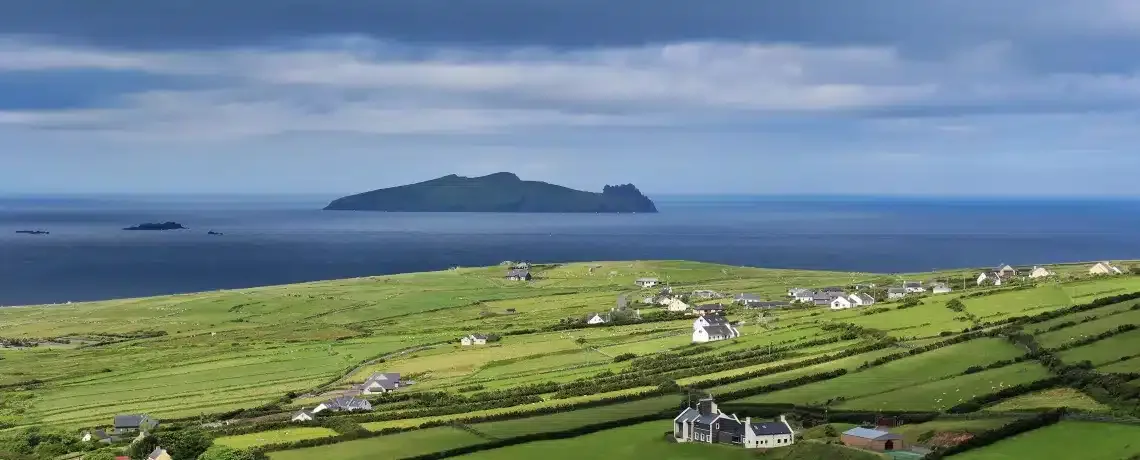
We left Killorglin heading for the small town of Milltown – marking the southern start of the Dingle Peninsula. From there, it was an easy drive along a coastal road, enjoying Dingle bay to our left.
The first stop along the way was Inch Strand – which is nicely ironically named as it extends along a 3 mile spit into the ocean. Much of the film “Ryan’s Daughter” (with Robert Mitchum) was filmed around here – and we were presented with many more movie sets as we continued our drive around the Peninsula.
So, after a bracing walk (no swim!) along Inch strand, we headed for the pretty village of Annascaul (pronounced Aun-a-scawl) – and into the South Pole Inn – once owned by the Antartic explorer, Tom Crean.
Annascaul hit my consciousness as a younger fellow when the singer Christy Moore burst onto the scene with his song, “Don’t forget your shovel” – a song about the hard times many Irish emigrants faced in Britain in the 1950s and 60s. Like the best songs, it’s entertaining while packing a serious social punch.
“Enoch Powell will give us a job digging our way to Annascaul,
Enoch Powell will give us a job digging our way to Annascaul,
And when we finish up he’ll close the hole and all”.
But that’s me! You can hear the full song here – and a young Christy Moore digging with his shirt off!
Well before we come to the town of Dingle, there is a turnoff by Lispole – and it takes you down to one of the most spectacular castle ruin locations. Minard Castle was built by the Fitzmaurice / Fitzgeralds in the mid 16th century.
This is wonderful quiet place to bring a picnic and just take in the scenery.
But we must roll on! Onwards into the town of Dingle. Dingle is a place that we first visited in the mid-1970s. At that time, it was an isolated place – full of Irish speakers and free spirits! It felt like it took forever to get there, but then you never wanted to leave. These days, it has expanded mightily, but still retains much of its old charm.
It’s always hard to forget that Dingle is a fishing town and port. By the 1200s, the Normans had established Dingle as a primary port on the west of Ireland. It also became a main entry point for wine – opening up strong ties with France and Spain up to the 1600s. It became the main departure point for pilgrims to Santiago Di Compostela in Spain.
The whole area was ruled by the Fitzmaurice Fitzgeralds – Knights of Kerry and Earls of Desmond – until the failed Geraldine rebellions in the late 16th century.
Today, the streets are populated by every manner of nationality – not because of the port – but because of the visiting coach tours who arrive, dispatch, head off for Slea Head – and then leave as the evening wears on. Leaving the town for the locals and more persistent tourists. The pubs come alive with music and craic for the night.
It’s a place with a personality of it’s own that we come back to again and again – enjoying the town as well as it’s vast and beautiful hinterland “back west”.
Names that you find in the Dingle town area in greater numbers (according to the 1901 census) include:
Ashe, Baker, Barrett, Begley, Brosnan, Cahalane, Cleary, Connor, Curran, Devane, Donoghue, Dowd, Falvey, Farrell, Ferriter, Fitzgerald, Flaherty, Foley, Garvey, Graham, Griffin, Houlihan, Johnson, Kavanagh, Kelliher, Kennedy, Kevane, Lynch, Manning, Martin, McCarthy, McKenna, Moran, Moriarty, Murphy, Neligan, O’Connor, O’Shea, O’Sullivan, Quinn, Rayel, Sayers, Scanlon, Sheehy, Sullivan, Talbot, Wallace, Walsh.
Is one of your Irish family surnames here?
Like to add your Dingle town surname to our list? Just signup for your free weekly Letter from Ireland by clicking here.
From Dingle to Dunquin.
For me, the whole area west of Dingle town – towards Slea Head and around to Ballyferriter is quite magical. It’s an area full of the most wonderful scenery, walks, beaches and scores of antiquities from ring forts to beehive huts to romanesque churchs and castle ruins.
One of the first places you come across are the calm waters and sands of Ventry bay. This was the starting point from centuries back for pilgrims who came ashore to trek to Mount Brandon. I walked their trail – the “Cosán na Naomh” (The Saints Path) a couple of years back. It’s only about 10 miles and takes you on a real alternative route from here to the foot of Mount Brandon.
As you round Slea Head and take in the scenery – the sea and cliffs to your left – ancient fields and beehive huts to your right, you realise just what an isolated part of the world this must have been at one time. In fact, the road around Slea Head was built as a famine relief project. It was probably thought of as “marginally necessary” back then, but has become a real asset to the area today.
And down to the beautiful wild beach at Coomeenole – included in many scenes in Ryan’s Daughter. It can be a bit dangerous for swimming, but as you can see on the day we were there it was all fun and games!
The village and area of Dunquin lies further back the road – with the Blasket islands lying just offshore. This time we didn’t get out to the Islands – but were fortunate to head there last April when the Basking Sharks and dolphins were showing off in droves (or pods!) in the seas around the island.
The road down to the pier in Dunquin has to be one of the most photographed places in the country – usually with lots of sheep making their way up the hill. If you don’t make it to the islands, it’s well worth while visiting the Blasket Island Visitor centre to better understand the area and life in times gone by.
However, if you do get a chance to get over to the Great Blasket island, it’s a wonderful place to spend a day just wandering about and poking around the old deserted buildings. There is a real sense of tranquility and history around the island.
One of the most attractive aspects of the Dingle Peninsula for us has to be the range of walks in the area. You’ll find well-signposted looped walks all around from 30 minutes to 3 hours duration. Also, there is the biggest walk of all – The Dingle Way – which loops all around the peninsula and has to be in the top 10 long distance walking trails in the world.
In the picture above, you see Carina heading over the stile on the way to the schoolhouse where Robert Mitchum once worked as a schoolmaster!
And here it is, looking a little forlorn – the set that was built for the schoolhouse used in Ryan’s Daughter. It would be nice to see it rebuilt and open to more viewers – but it is also nice to have it all to yourself and the sheep.
Names that you find in the Dunquin and Blasket Islands area in greater numbers (according to the 1901 census) include:
Casey, Connor, Crohan, Daly, Fenton, Fitzgerald, Garvey, Guihan, Guiheen, Keane, Kearney, Kevane, Long, Malone, Manning, Mitchell, Moriarty, Sayers, Scanlon, Shea, Sheehy, Sullivan.
Is one of your Irish family surnames here?
From Dunquin back to Dingle.
The scenery above inspired Phil and June Colclough to write “Song for Ireland” when they visited the Dingle Peninsula. Here we have the late, great Luke Kelly of The Dubliners with his interpretation – with lyrics and scenery thrown in:
One of our favourite places to stop and just take things in is Clogher strand. No swimming or lounging about here – but you often get the most spectacular seas coming in the narrow opening. It really puts the “Wild Atlantic” into the Wild Atlantic Way.
Ballyferriter is the main village in this part of the Dingle Peninsula, and a real favourite with holidaying Irish families. Many school children also come to these parts each summer to learn Irish and stay with local families.
Time for a well-deserved break!
As you head back towards Dingle town on the Slea Head loop, you will in fact be looping around Smerwick Harbour. Do take a while to get out and walk the wonderful beaches that provide a shoreline all around the harbour to the little village of Ballydavid.
One of the Irish surnames that you find in these parts is “Begley. They were a branch of the Donegal Begleys who arrived in these parts as merceneries in earlier times. One of these Begleys is Mr Séamus Begley himself, a wonderful singer (specially in Irish) and accordian player. Have a listen and see what I mean:
From Dingle to Tralee.
Back in Dingle, we hit the road for Tralee. The most interesting route takes you up and into the mountains through the Conor Pass – the highest mountain pass in Ireland.
As we hit the pass, a vista opens up to the north into the wide open waters of Tralee bay. One area that is a hidden gem – and little explored on the peninsula – is Cloghane on the north shores at the foot of Mount Brandon.
If you can manage to get to Mount Brandon on a clear day – and trek to the summit – it is one of the most rewarding sights in the world. It is a high mountain, and so spectacular as it drops down to the ocean. This was a holy mountain for many centuries and the destination for many pilgrims in this part of the world.
However, if you don’t know the area always take a guide. The weather is changeable on the mountain – even by Irish standards!
And so we rolled on into the town of Tralee – capital of County Kerry!
Names that you find in the Cloghane and Castlegregory areas in greater numbers (according to the 1901 census) include:
Begley, Brick, Callaghan, Connor, Dowd, Finn, Fitzgerald, Greany, Keane, Lynch, Moriarty, Murphy, O’Donnell, O’Neill, Sheehy, Sullivan, Tuohy and Walsh.
Is one of your Irish family surnames here?
I hope you enjoyed this leg of our trip around the Wild Atlantic Way – I could probably have written another 20,000 words – and show another hundred pictures. But just come and experience this beautiful part of the world for yourself!
Join us on the next leg of our trip as we travel from the town of Tralee in County Kerry to the seaside town of Kilkee in County Clare.


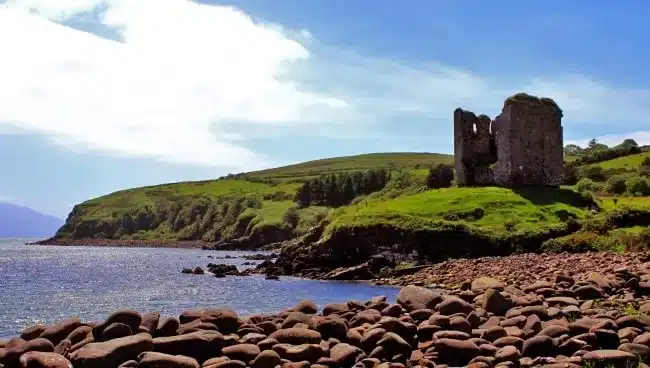






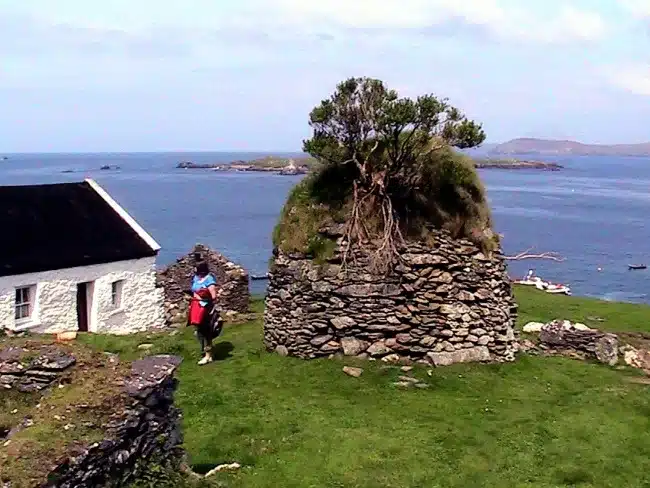


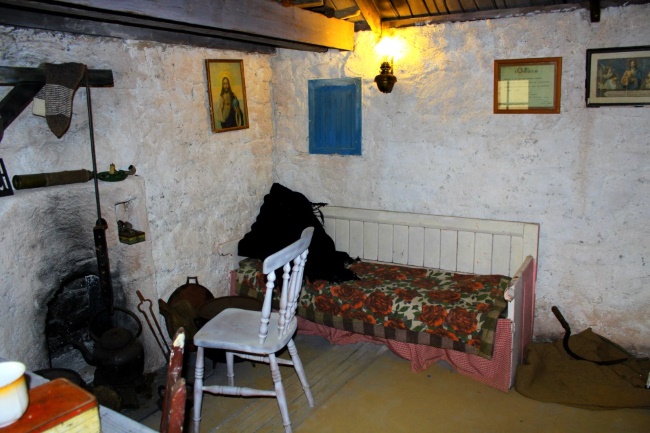




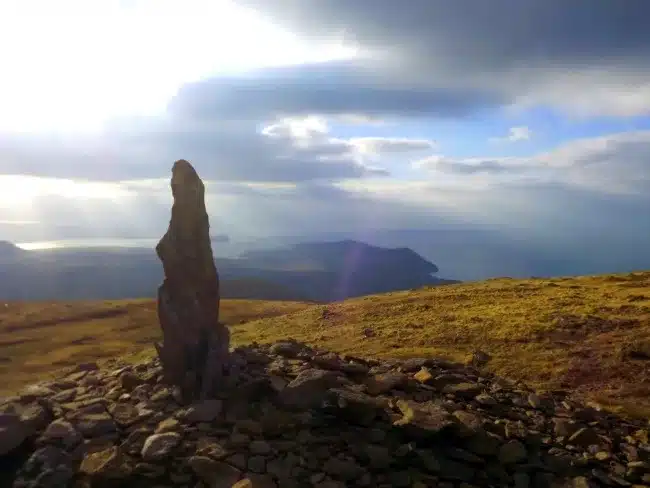
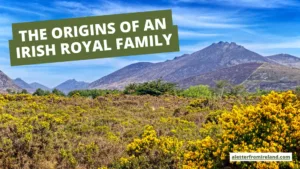
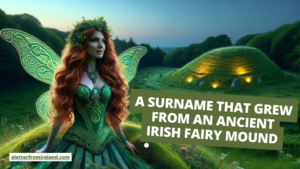
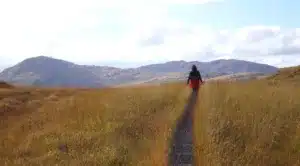
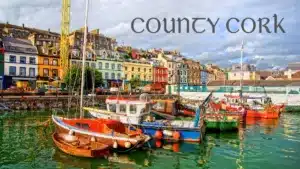
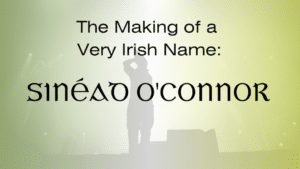
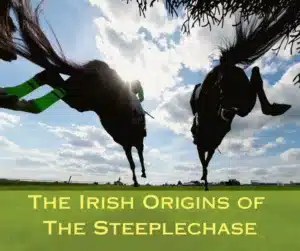
Only Plus Members can comment - Join Now
If you already have an account sign in here.